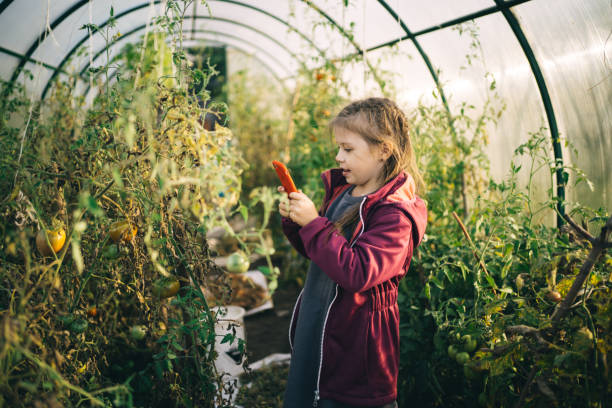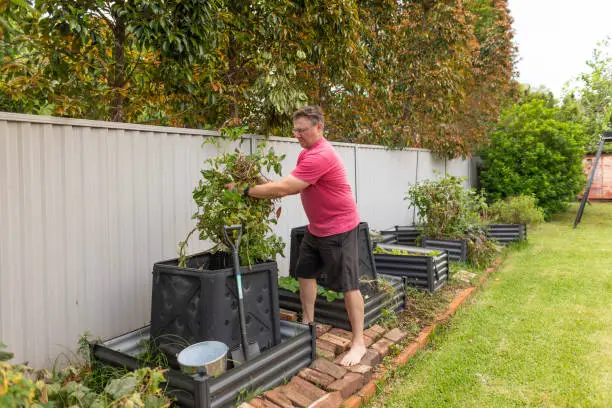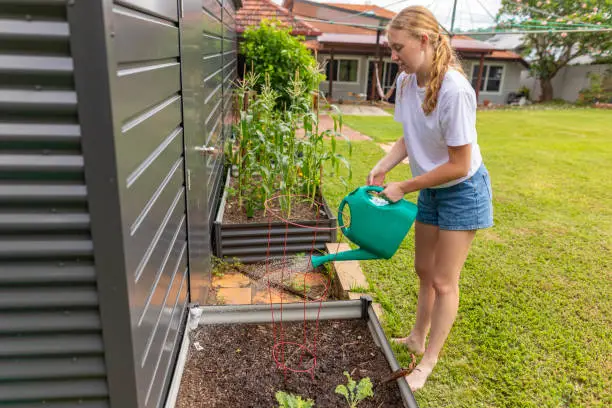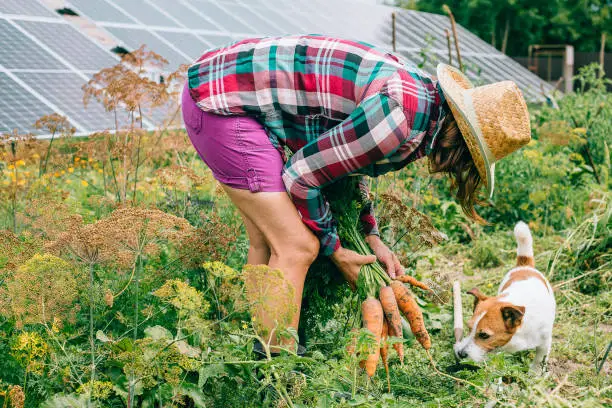Maximizing Small Backyard Homesteading Spaces with Container Vegetable and Herb Gardening
In backyard homesteading, container gardening is a key to growing various crops and herbs despite space limits. This gardening system transforms farming and maximizes productivity in small spaces. Container gardening can turn modest spaces into lush, productive gardens with fresh produce. This article covers all the tactics, concerns, and innovative ideas for beginners and experts who want to optimize small vegetable and herb gardening spaces.

Container gardening is simple and flexible, allowing a wide range of vegetables and herbs to be grown in pots, boxes, and other containers. This method solves backyard homesteading space issues by growing food on patios, balconies, and window sills. A good container garden requires the correct containers, ranging from pots and planters to barrels, baskets, and even antique furniture. Each container gives the garden aesthetic and functional benefits, increasing production and beauty.
The appropriate soil mix is essential in container gardening. For drainage and aeration, container soil must be lighter and more absorbent than garden beds. Plant growth needs nutrients and moisture. Thus, a mix of peat moss, vermiculite, and compost is recommended. A slow-release fertilizer can boost soil fertility to meet vegetable and herb needs.
Due to limited soil volume, container gardening requires careful watering to avoid drying or waterlogging. Considering weather and plant water needs, a constant watering schedule is vital. Self-watering containers or drip irrigation systems save container garden effort and ensure plants receive the proper water at the right time.
Another important part of container gardening is sunlight. The majority of vegetables and herbs need six hours of direct sunlight daily. Positioning containers in sunny places or utilizing mobile plant supports helps maximize sunshine exposure, boosting plant growth and production. Grow lights allow year-round horticulture in low-light environments.
With its wide range of veggies and herbs, container gardening offers unlimited culinary and landscape design possibilities. Spinach, lettuce, and kale are great starter plants due to their rapid growth and small area needs. Container herbs like basil, cilantro, and mint provide flavor and fragrance for cooking in the garden. In larger containers, tomatoes, peppers, and eggplants require more care but yield abundant yields.
Container gardening requires imaginative vertical gardening to maximize space. Trellises, wall planters, and hanging baskets can greatly enhance gardening space for vining plants like cucumbers, peas, and beans. This method boosts garden productivity and adds visual interest, creating a lively outdoor setting.
Container gardening may maximize space and plant health with companion planting. Keeping appropriate veggies and herbs together can discourage pests, boost pollination, and assist each other, decreasing chemical use. Growing basil with tomatoes improves flavor and development, while marigolds repel insects, safeguarding neighboring veggies.
Composting and rainwater collection make container gardening more sustainable. Kitchen scraps and garden debris can be composted to enhance soil and promote healthy plant development without synthetic fertilizers. Container gardening has environmental and economic benefits, including conserving water and lowering utility expenses by collecting rainwater for irrigation.
Backyard homesteaders can enjoy container gardening for vegetables and herbs while connecting with nature. With design, creativity, and effort, even the smallest spaces may become lively, productive gardens that generate fresh vegetables and improve quality of life. This guide can help people redefine small-space gardening by guiding them through growth, sustainability, and culinary experimentation.
Waste to Wealth: Small-Scale Composting in Backyard Homesteading
Backyard homesteading requires inventiveness, resilience, and a deep connection to nature. This lifestyle includes several sustainable and self-sufficient behaviors, including a small-scale compost system. Recycling organic waste into nutrient-rich soil is environmentally responsible and maximizes space use, converting every square inch of a backyard into a cornerstone of fruitful growth and abundance.
A small-scale compost system turns waste into wealth, a simple but significant idea. Organic waste like kitchen scraps, yard clippings, and paper goods decompose naturally to become compost. This compost improves soil structure, moisture retention, and nutrient content, helping homestead garden veggies, herbs, and flowers develop.
A composting system starts with a good location and container. A position that is easily accessible and partially protected allows regular compost pile contributions without sun drying. Commercial compost bins or homemade ones fashioned from pallets, wire mesh, or trash cans with air holes are options. The compost system’s capacity, aeration, and efficiency depend on the container.
Layering green and brown materials is a critical composting technique. Kitchen garbage, including vegetable peelings, fruit debris, coffee grounds, and fresh plant matter, is nitrogen-rich. However, carbon-rich brown materials include dry leaves, straw, cardboard, and wood chips. The right nitrogen-carbon balance promotes microbial activity, decomposing raw materials into compost.
Composting relies on moisture and aeration. To support decomposing bacteria, keep the pile moist like a sponge. However, excessive wetness can cause anaerobic conditions, suffocating these organisms and creating odors. Turning the pile regularly ensures oxygen reaches the bacteria, accelerating decomposition and preventing smells. Tumbler compost bins make turning and aerating easier for folks with limited room or mobility.
Temperature monitoring shows microbial activity during composting. Heat from a healthy compost pile can reach 130 F to 160 F. Microbial activity generates heat that kills weed seeds and diseases. The homesteader can alter moisture levels or turn the pile to reintroduce oxygen by monitoring temperature changes.
Adding compost to the garden completes this biological cycle. Finished compost is dark, crumbly, and earthy-smelling, ready to enhance plant soil. It can be put into the soil when planting, applied as a top dressing, or brewed into compost tea, a nutrient-rich liquid fertilizer. This approach closes the organic waste recycling loop and improves the homestead garden’s health and productivity by lowering chemical fertilizers and insect and disease resistance.
Beyond its practical benefits, backyard farming with a tiny compost system helps people learn and appreciate natural cycles. It represents homesteaders’ environmental stewardship, life’s interdependence, and a tactile connection to the earth. Backyard homesteading emphasizes sustainability and self-sufficiency, and this approach turns trash into a resource.
Composting affects ecosystems outside the garden. The soil’s carbon sequestration, methane reduction from landfills, and water conservation from enhanced soil structure help mitigate climate change. Composting becomes a microcosm of environmental care, showing how individual acts can help sustain the planet.
Finally, a small-scale compost system is essential to backyard homesteading, promoting sustainability, self-sufficiency, and environmental stewardship. This method helps homesteaders see garbage as a resource rather than a waste product. Kitchen waste to compost to fertile soil represents growth, decay, and rebirth.






Leave a Reply